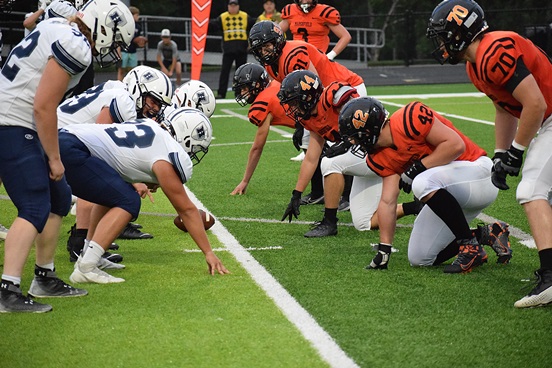
This story is sponsored by: American Family Insurance-Randy LeMoine Agency
By Paul Lecker
MarshfieldAreaSports.com
The high school football landscape may be changing again.
The WIAA Conference Realignment Task Force voted Tuesday on 35 football-only requests in the first meeting of the review process for the 2024 and 2025 seasons.
There are 27 plans that were requested by schools seeking to change conferences from their current 11-player affiliations and another eight in 8-player football.
A total of 14 schools, including Hortonville in the Valley Football Association, Pittsville in the Marawood Conference and Nekoosa in the Central Wisconsin Conference Small Division, were the catalysts for the modified plans, which would change the conference make-up for many schools in Central Wisconsin.
A vitrual meeting to discuss possible changes will be held on Jan. 5 where the newly-affected schools are invited to appear and provide feedback.
All schools impacted by the realignment plan may provided feedback prior to and during the next Task Force meeting on Jan. 12. Plans that are advanced from the January meeting will be reviewed by the Board of Control to make a final determination on each of the proposals at its meeting on March 7.
Wisconsin Valley Conference schools would again be affected by the new proposal. The core five WVC schools – D.C. Everest, Wausau West, Marshfield, Stevens Point and Wisconsin Rapids – would move into the Big Rivers/VFA East along with current Big Rivers schools Eau Claire North and Eau Claire Memorial. The Big Rivers West would consist of the remaining current Big Rivers schools, Chippewa Falls, Hudson, Superior, Menomonie, New Richmond and River Falls, along with Rice Lake, which is in the Big Rivers for all other sports, but are currently in the Middle Border Conference for football.
The two new Big Rivers divisions would be required to have one crossover game each season that would count as a seventh conference game.
Hortonville and Appleton West, which are now aligned with the five WVC schools in the Valley Football Association, would move back to a more Fox Valley Association format with De Pere, Green Bay East, Kaukauna, Kimberly, Manitowoc and Sheboygan South. Appleton East, Appleton North, Bay Port, Fond du Lac, Green Bay Preble, Neenah, Oshkosh West and Sheboygan North would comprise the other division of the new Fox River Area grouping.
Wausau East, which has not fielded a football program for the past three years, would join Merrill in the Great Northern Conference. Tomahawk would also be added to the conference, with Ashland and Hayward going to the Heart O’North Large.
The Marawood Conference would be dissolved under the new plan, with Auburndale, Edgar, Pittsville and Abbotsford moving into the Central Wisconsin Conference Small Division, and Colby and Marathon moving into the CWC Large.
The new CWC Large would consist of Amherst, Colby, Loyal/Greenwood, Marathon, Spencer/Columbus Catholic, Stratford, Weyauwega-Fremont and Wittenberg-Birnamwood, with Manawa, Shiocton and Nekoosa being split between the Northwoods and Trailways conferences.
The CWC Small would include Abbotsford, Wisconsin Rapids Assumption, Auburndale, Edgar, Iola-Scandinavia, Stevens Point Pacelli, Pittsville and Rosholt. Wild Rose is permanently moving to 8-player football, with Loyal will form a co-op team with Greenwood, which has played 8-player football in recent years, and move to the CWC Large.
The Cloverbelt Conference football only alignment would remain unchanged with Durand-Arkansaw, Elk Mound, Fall Creek, Mondovi, Neillsville/Granton, Osseo-Fairchild, Eau Claire Regis and Stanley-Boyd.
“In review and consideration of each of the realignment requests, the Task Force identified various rationale for advancing or not advancing requests,” the WIAA announced in a media release. “Those factors included providing all members with a conference affiliation, maintaining a reasonable number of teams within geographic and enrollment considerations, participation numbers and levels of programming, and flexibility with potential shifts caused by the forming of co-ops and programs transitioning from 11-player to 8-player status.
“The purpose of the conference realignment process is to apply a formalized method for member schools to request relief from conference affiliations. A committee of member school administrators evaluates all realignment requests and presents them to the Board, which retains the authority to make final determinations of all conference alignment decisions.”
Click here to view the complete realignment proposal from the WIAA.


